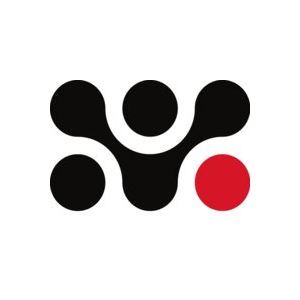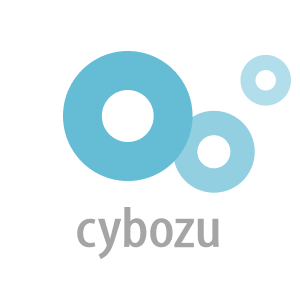Updated May 30, 2025
Agile Development in Japan: The Current Situation [June 2025]
For those in the know, the Agile methodology has been the primary method used in tech and software development for quite some time now.
If you’re a developer working in the United States, chances are you know that Agile represents how things are supposed to be done. The methodology has been dominating the sector, especially in the States, with over 70% of U.S. companies using the method as their primary system to operate and develop products.
Meanwhile, Japan’s tech industry has been a longtime subscriber of an alternative method that’s usually associated with a more traditional style of management — the waterfall methodology.
The Agile Methodology: The Background
Before we can say anything about why the Agile development style hasn’t been popular in Japan, we first need to understand what the methodology is and what it means for software development in general.
What Is Agile?
If this is your first introduction to the concept, it’s worth noting that Agile doesn’t only pertain to software development, even though it was originally invented as a methodology in that field. It’s an approach that various companies can adopt from all sorts of industries in regard to any development process.
Scrum, Lean, or Kanban are alternative frameworks that you might be familiar with, and they were all developed under the basic principles of the Agile methodology.
In simple terms, the Agile methodology is an approach to management that involves breaking up the project into distinct cycles and phases. Instead of finishing each cycle and moving on to the next, the method allows for multiple cycles in development to continue simultaneously, allowing for much greater flexibility.
Essentially, the methodology approaches the development process as a continuous cycle that consists of planning, executing, and evaluating.
At its core, Agile is centered around constant collaboration during the development process, and this even involves the customer. In fact, that’s one of the main characteristics of Agile and what sets it apart from other methodologies.
Besides the emphasis on constant collaboration, there are a few other principles that set Agile apart from other strategies, such as the waterfall method. So, before we get to those, let’s briefly talk about the waterfall method first and see what it’s all about.
The Waterfall Method Explained
Also known as the “waterfall model”, the name of the methodology refers to linearity, as it involves a sequential, “from top to bottom” approach in management and/or development.
Before the emergence of Agile methodology, the waterfall method was the predominant management strategy in business for a very long time, and it’s still fairly popular among traditional companies in Japan.
Essentially, in waterfall-style development, each phase of a development process is worked on individually to completion before moving on to the next phase.
So, unlike the Agile methodology, where learning from failure is a part of the day-to-day cycle, and people are encouraged to try new things, the waterfall approach requires more caution, as there’s less room for failure.
This also means that the waterfall method requires much more planning, as the whole project is planned only once and very thoroughly at the beginning of the development process.
As you can imagine, this approach isn’t as reliable in today’s volatile development environment anymore; the plan would stay the same despite the possibility of a mishap occurring in later stages.
Now, let’s continue with Agile and introduce the four core values of the methodology.
The Main Values of the Agile Methodology
The Agile methodology can be explained with the help of four core values. These are:
Individuals and interactions over processes and tools. This is perhaps one of the greatest strengths of the methodology. As opposed to relying on strict processes and following each protocol to a T, even though it may not be useful in every scenario, the Agile method favors communication and interpersonal relationships to tailor processes according to specific needs.
Working software over comprehensive documentation. Another strong suit of Agile is that it relies not on paperwork but on competent software solutions to handle data, perform menial tasks, and follow regular processes. While preparing detailed paperwork and keeping detailed records is good, it slows the process down, and digitalizing processes allows searching and retrieving data to be much quicker and easier.
Customer collaboration over contract negotiation. Instead of having the client on the opposite side of a constant negotiation process, the Agile methodology includes the customer in the production process as well. Throughout the project, the customer receives regular updates and has an open line of communication to keep things transparent.
Responding to change over following a plan. While it may be listed last, this value is perhaps the strongest of the methodology’s core values, as it means flexibility over everything. As things may not always go according to the plan in life, being able to adapt to changes instead of trying to follow strict protocols that may not apply to the current state of a project allows for a much more dynamic development process that can still yield effective results even if the conditions change drastically.
Let’s now go back in time and briefly explain just how this methodology came to be.
Toyota Production System and the Emergence of Agile
While the country may seem like it’s falling behind in terms of adopting Agile, Japan is actually where the foundations of the methodology were formed, and it all dates back to Toyota Production System (TPS).
In the ‘50s, Toyota came up with a new management system that relied on a few basic principles, which were largely formed around the ideas of eliminating all waste, humanized automation, and the just-in-time system, which means that each process only produces the amount needed to move on to the next step in a constant cycle.
TPS was quite “out there” as an idea in terms of the current standards at the time, as the system involved radical ideas, such as “people over processes” and decentralization of decision-making.
While TPS was seen as a mad scientist’s experiment in its time, the company’s system later gained popularity in the United States. Not long after, in the ‘90s, TPS became known under a different name when John Krafcik structured the “Lean manufacturing system” under the principles of the TPS.
The emergence of Lean gained traction during this time, as a number of different methodologies that came to be known as “light methodologies” began popping up, while models such as Scrum and RAD were also born out of this trend.
Finally, as the waterfall management system began losing popularity, the Agile methodology as we know it today was born in 2001 with “The Agile Manifesto.”
Since then, many other customized systems have been born out of the Agile methodology, and today, we collectively refer to all systems that stem from the principles laid out in The Agile Manifesto as agile management styles.

Why Agile Hasn’t Been Popular in Japan
As I mentioned, even though the emergence of Agile can be traced back to Japan and to the Toyota Production System, the methodology historically didn’t catch on in the country, as most traditional companies still use the waterfall methodology.
However, the answer to why this has been the case isn’t one that’s simple but rather multi-layered. What makes Agile less desirable and the waterfall approach more popular is a combination of several factors.
A Culture of Outsourcing: Old Habits Die Hard
Perhaps one of the biggest reasons why Agile hasn’t been popular in Japan is due to the fact that outsourcing has long been a part of the business culture here, even though it has been changing in recent years.
Historically, it was quite common for Japanese companies to outsource development teams instead of building in-house teams for specific tasks and processes, and this isn’t really ideal for companies that want to adopt an Agile system.
While modern companies, especially the ones in tech, usually have in-house teams and only outsource when it’s absolutely necessary nowadays, it’s still common for companies that are on the more traditional side to outsource certain parts of production or development, and this is affecting the popularization of the Agile methodology in Japan significantly.
However, eliminating outsourcing isn’t exactly easy, as there’s a reason behind the popularity of this practice. For the longest time, it has been extremely common in Japan to outsource IT human resources, as companies would often hand over crucial tasks like system development to third parties, which are called System Integrators.
While this practice is not as widespread today, it’s still a big part of the problem. If we look at the numbers, while over 60% percent of the IT workers in the U.S. are employed by the main company, over 70% of IT workers in Japan are outsourced from third parties.
Considering the nature of the Agile methodology, you can see how this is a problem. While the Agile methodology requires companies to quickly adapt to changes, this requires companies to have staff that knows the inner workings of the company and how the systems work, which can’t be compensated with outsourced employees.
What’s more, as communicational and organizational skills are crucial to an agile work environment, it’s hard for employees to take initiative when a good portion of the work is outsourced and dependent on third-party vendors.
All in all, even if it’s becoming considerably more popular lately, it can be said that the true implementation of agile isn’t possible unless the practice of outsourcing is eliminated in Japan.
Risk Aversion and Agile Aren’t the Best Duo
As I explained, one of the main differences between the Agile method and a strategy like waterfall, which has been historically the predominant strategy used by Japanese companies, is that the Agile method allows for multiple processes to run simultaneously.
On the other hand, according to a waterfall management style, a project is to be separated into distinct stages, and each stage is handled one by one, only moving on to the next stage after completing the prior.
While this approach may sound too rigid, it allows for one thing that’s highly valued in Japan, and that’s certainty. Culturally, the Japanese like to avoid risks, and this, of course, reflects on how decisions are handled in business as well.
So, in such a risk-averse environment, you can imagine how much planning goes into each stage of each project and how the flexibility (responding to change over following a plan) approach can be a nightmare for Japanese companies that like to calculate the tiniest of the risks to avoid any mishaps.
Hierarchy Matters
This isn’t true for just Japan but for other Asian countries as well. That said, another reason why Agile and systems that stem from it, like Scrum, haven’t been popular in Japan is the presence of a strong sense of hierarchy in all aspects of life.
If you read any of my posts on how to thank someone in Japanese, how to say sorry in Japanese, or even saying “hello” in Japanese, you’ll know that there’s a hierarchy in even social life, with younger people having to act and speak a certain way around people who are older than them.
Of course, this hierarchy is even more prominent in a work environment where there are titles and a clear structure involved. As people are quite used to this structure, the chain of command and, therefore, each individual’s responsibilities are always clear.
Considering the fact that an Agile work environment brings along titles such as “Scrum Master” or “Agile Coach,” you can understand why having titles that don’t have direct subordinates doesn’t come naturally to Japan. They simply aren’t used to it.
In fact, familiarity is another reason why the existence of a clear chain of command is so important to Japan. Because things have been this way for so long, a large portion of the culture relies on daily communication not being explicit but implied.
You can read more about this in my extensive post on the Japanese concepts of honne and tatemae, but many Japanese people are culturally motivated to conceal their true feelings in order to sustain societal harmony and not inconvenience others. It’s a good way to avoid many awkward moments that occur during surface-level social interactions, but it’s not great for an “agile” workplace.
So, in an environment where it’s expected of people to refrain from saying things that may inconvenience others, you can imagine how having a flexible workplace structure where the processes aren’t set in stone can be a recipe for disaster.
Agile is Hard To Implement in Rigid Company Structures
In addition to the hierarchy I mentioned, another reason why Japanese companies aren’t structurally the best candidates for adopting an agile system is the rigid structure most companies have.
As you may know by now, the Agile methodology relies quite a bit on flexibility and reshaping the management of a project as the conditions change in real time. However, this is almost impossible to implement in a traditional Japanese company structure where things more or less need to be defined from the get-go.
This means that the budget, the delivery time, and the scope of a project need to be clarified as much as possible to avoid mishaps along the way, and this also goes for system development.
So, because system development usually involves contract agreement, which requires defining the deliverables at the beginning stages of a project, in order for agile to be implemented, perhaps these traditional company and contract structures need to be revised first.
Change Starts From Within: Different Motivations
Lastly, another reason why Agile didn’t quite take off in Japan until recently is actually a bit more fundamental, as it has to do with the country’s well-known history with technology.
As you may know, Japan has been a true pioneer in the field of hardware production in the past century, and this has continued to be the case. Be it kitchen appliances or media and entertainment devices, Japanese brands have dominated the market, especially up until the early 2000s.
Brands like Sony, Panasonic, Nintendo, and Toshiba were literally everywhere during this time, and I talked about this extensively in my post on Japanese technology and how it reshaped the world.
So, you can imagine how dominating the world of technology in such a manner for so long can influence Japan’s motivations in terms of the country’s future of innovation. The success that came with hardware production solidified the importance of hardware in Japan. But unfortunately, this success led to a lack of investment in software development. Hardware was making so much money that software felt like a waste of effort by comparison.
As big Japanese companies like Sony showed no interest in software until way down the line, not only did software not get much attention in Japan, but the trend of software development also struggled to make its way into the country.
As you’d expect, while Agile was taking off in the U.S. and spreading to other industries, this also wasn’t the case for Japan until later.
On top of all of this, in a country where people are already too goal-oriented and experimenting (i.e risk-taking) isn’t always welcome, one of the biggest motivators for traditional businesses in Japan is reducing costs.
As a result, Japanese companies have historically focused on either cutting costs or maximizing profits. And while switching to agile development can help achieve these goals in the long run, it might not be so easy to show the direct impact in a shorter time frame.
So, this is why this mindset of only going by immediate tangible results and not having any room for failure to experiment is perhaps the biggest underlying reason why Agile historically hasn’t taken off in Japan.

Agile in Japan Today: Does Japan Use Agile at All?
As I mentioned, there’s no denying that the waterfall method has long been the predominant development style in Japan’s IT industry until recently. However, things have been rapidly changing in the past several years.
Nowadays, it’s safe to say that most modern and international tech companies in Japan, especially the ones that we feature in our Japan Dev company list, all subscribe to the Agile methodology.
However, while it originated in the IT world, the Agile methodology itself isn’t just about the IT sector but business as a whole. There’s so much to learn from it that can benefit companies from various other industries, and non-IT businesses all over the world are adopting tailored versions of Agile methodologies, such as Scrum, and having great success with them.
So, while Japan’s tech industry is already caught up on the trend on the development side of things, we can say that the business counterpart is still in the earlier stages when it comes to the popularization of Agile in Japan.
I explained this in my post on whether software engineers are respected in Japan or not, but historically speaking, Japan has valued hardware over software, and thus, software development in Japan has stayed as a mere necessity rather than something that can be improved upon for the longest time.
This mentality, of course, has since been a part of the business culture in Japan, and as expected, it’s hard to change such practices once they become the norm.
Breaking Through to the Business Side
If we leave Japan for a minute and take a look at the implementation of the Agile methodology in the rest of the world, we can generally separate the whole process into two stages.
As it was originally a software development approach, in the first stage, we see people from the software industry adapting to an agile way of working. These are, of course, mainly software and IT engineers. You know, people who deal with the actual, hands-on development.
Once the Agile methodology sets its roots in the software development world, in the second stage, the business/management side of software companies, as well as businesses from other industries, usually begin to take notice of the success and get inspired to implement similar strategies organization-wide.
Right now, it’s safe to say that Japan is well into the second stage, as the popularity of the Agile development style in software development is already spreading to other industries.
What’s more, the government has also been making efforts to expedite the Digital Transformation (DX) process in Japan. Back in 2018, the Ministry of Economy, Trade, and Industry released the Guidelines for DX Promotion, which has been quite influential on the traditional business world in Japan as it’s partially responsible for DX becoming as widespread as it is in Japan today.
The main focus of the guidelines were about nudging businesses towards utilizing digital technology and data analysis to respond to the rapid changes in a volatile business environment. Additionally, the guidelines also recommended that businesses make products based on the consumer’s needs by utilizing said data and technology.
Thanks to these efforts made by the government, today, it’s safe to say that a new culture has been forming in Japan where businesses are flexible enough to modify their company cultures, business models, and even products and services to fit the current need with the help of digitalization.
So, while software historically hasn’t been highly regarded in Japan as much as hardware, and this held the country back slightly in the past, it’s safe to say that the change has already begun as the number of agile companies in Japan is rapidly increasing.
The Tech World Has Caught Up
All in all, at least in the tech world, it’s safe to say that Japan has mostly caught up to the rest of the world, as Agile is the predominant methodology used by these companies. In fact, some of the most well-known companies in Japan are notable followers of the methodology.
For instance, Rakuten, Japan’s largest e-commerce company, is among the companies that implemented Scrum, a system that’s based on the Agile methodology.
To switch to Agile, the company has replaced its traditional project managers with Scrum Masters that oversee the development processes and make sure that everything goes smoothly. The company also utilizes daily meetings to review its day-to-day processes and make adjustments accordingly.
Another company that’s quite notable, Mercari, Japan’s first unicorn startup (a startup that’s valued at over one billion USD), is also among companies that adopted the Agile methodology. Mercari provides Japan’s biggest online consumer-to-consumer marketplace, and the company is quite vocal about how they utilize program managers and Agile-based systems to achieve success.
While these are only a few of the most notable examples, there are many more companies in Japan’s tech world that either made the switch from a waterfall style long ago or are in the process of changing.
You can find many other great companies that work on an Agile-based system on the Japan Dev job board, where we try our best to feature the best modern companies in Japan.
What Agile Can Do for Japanese Companies: Benefits of Adopting the Agile Methodology
Now that you have a good understanding of what Agile is and where Japan stands in terms of adopting such systems, let’s now talk about the future and explore what the methodology can do for traditional Japanese companies.
Agile Can Improve Efficiency and Productivity
This goes without saying, but the first and foremost benefit of adopting an agile strategy — in the long run — is the increase in efficiency and productivity that comes with an improved workflow.
As I mentioned, while the traditional approach to business can work, due to the strict hierarchical structures and the “not saying what you mean” culture in Japan, things don’t always go as smoothly and efficiently as they can.
While these are also reasons why implementing Agile in Japan is hard, the open communication and collaboration aspect of the methodology can also significantly help with these issues.
So, as the Agile methodology is all about flexible team structures and adapting to change as you go, it’s safe to say that most traditional Japanese companies’ workflow and productivity can be significantly improved with the help of systems like Scrum or Lean.

Agile Can Enhance Project Delivery and Quality Control
As more and more Japanese companies adopt Agile, teams are expected to deliver projects in a much more timely and efficient manner.
The current waterfall approach, where projects are worked on and delivered in a linear timeline, not only doesn’t allow any mistakes to happen during any part of the process, but it also fails miserably when something goes wrong at any step of the way.
An Agile approach such as Scrum can significantly help with this, as projects aren’t handled in a linear fashion but rather in continuous cycles. So, if anything goes wrong, it’s easy to improvise and adapt, and projects can still be delivered on time.
If, however, things are so bad that the current delivery plan needs to be delayed, the Agile methodology is helpful in this situation as well because it includes the customer in the process at every step of the way, preventing unpleasant surprises on the customer’s end.
What’s more, this type of open communication and keeping the customer updated inevitably keeps the project manager up-to-date on the state of the project at all times as well. This can help the project managers and other people in charge of final quality control and let them know about potential issues way in advance, which takes the load off of the quality control process significantly.
How to Make Agile Work in Japan: What Can Japan Do?
Even though the Agile methodology is gaining popularity, and more and more businesses adopt Agile-based strategies like Scrum, there’s still a bit more ways to go.
So, lastly, I’d like to talk about a few ways the implementation process of Agile strategies can be expedited in Japan and what businesses can do to make the switch easier on themselves.
Building In-House Teams Instead of Outsourcing
As I mentioned a few times throughout this post, reducing costs and maximizing profits has long been the main motivation for business decisions in Japan. This isn’t bizarre at all, considering it’s what businesses are for, but this single-dimensional way of thinking may cause various steps in development to be overlooked and even neglected.
Because of this approach, Japanese companies have historically been on the side of outsourcing whenever possible. If it meant cost reduction, most Japanese companies would see no harm in subcontracting a big part of a job to a third party.
However, as you can imagine, this poses a big threat to Agile-based work systems, as teams aren’t really “teams” when some people aren’t even working for the same company and therefore don’t share the same goals and vision with the rest.
So, in order for Agile to become the predominantly popular strategy for all companies in Japan, more companies need to switch away from dependence on outsourcing and subcontracting practices. Or if they can’t eliminate them completely, these practices should be minimized as much as possible.
Training at All Levels, Including the Management
A big reason why many companies fumble when trying to implement Agile into their workflow is the disconnect that happens when the development team itself is trying to adapt, but the management has no idea what’s going on.
However, what needs to be remembered here is that the Agile methodology doesn’t just concern the development process itself but all of the company as a whole, including the management.
A big thing with companies that try to half-willingly implement Agile is that the upper management doesn’t understand what the method exactly is and, therefore, doesn’t provide the teams with the leeway they need to build a new foundation from scratch.
Most of these companies want to implement Agile because it seems like the right or trendy thing to do, but truly adopting the method involves training at all levels, which is something many Japanese companies that are more traditional fail to do.
Get Job Alerts
Sign up for our newsletter to get hand-picked tech jobs in Japan – straight to your inbox.









